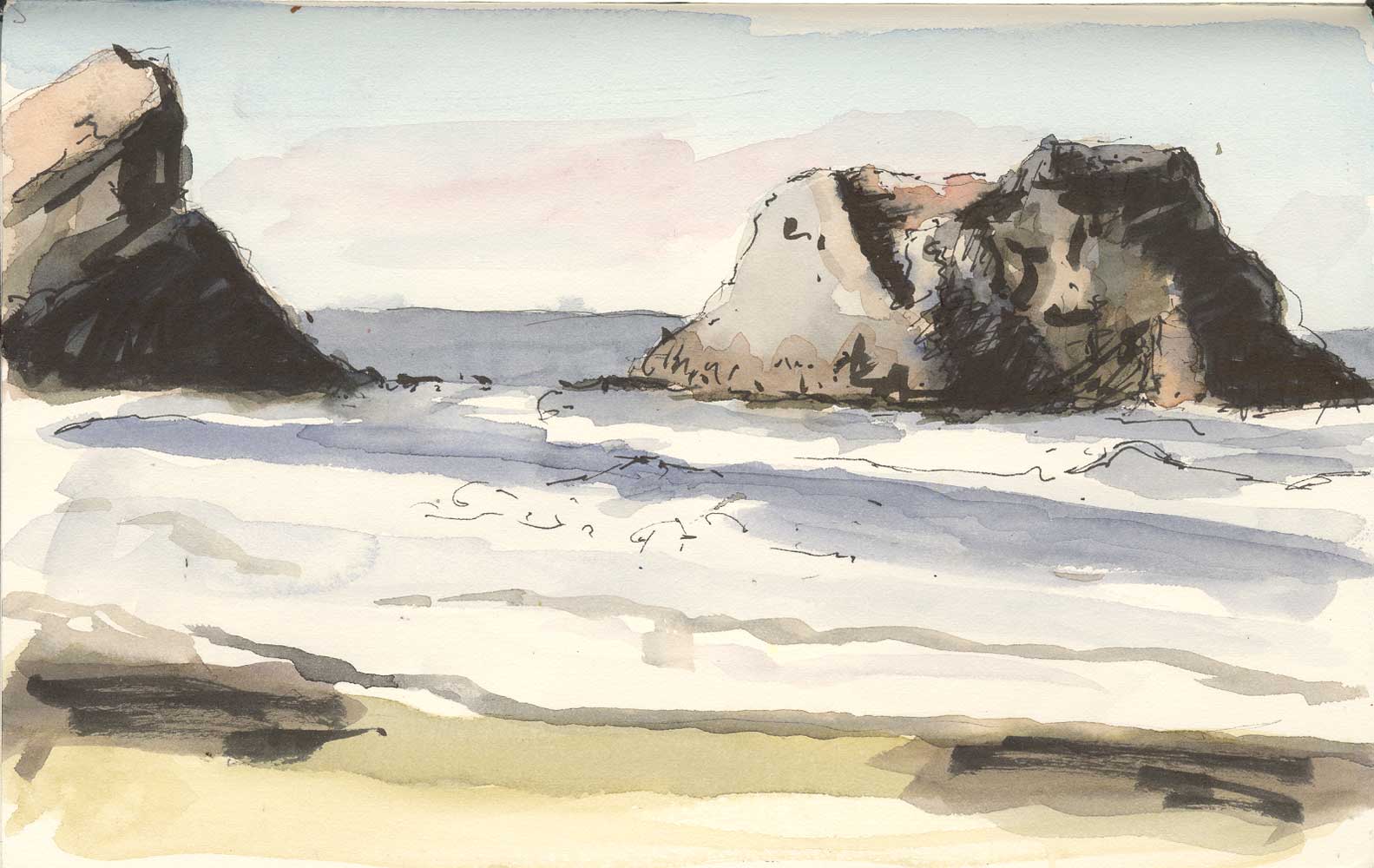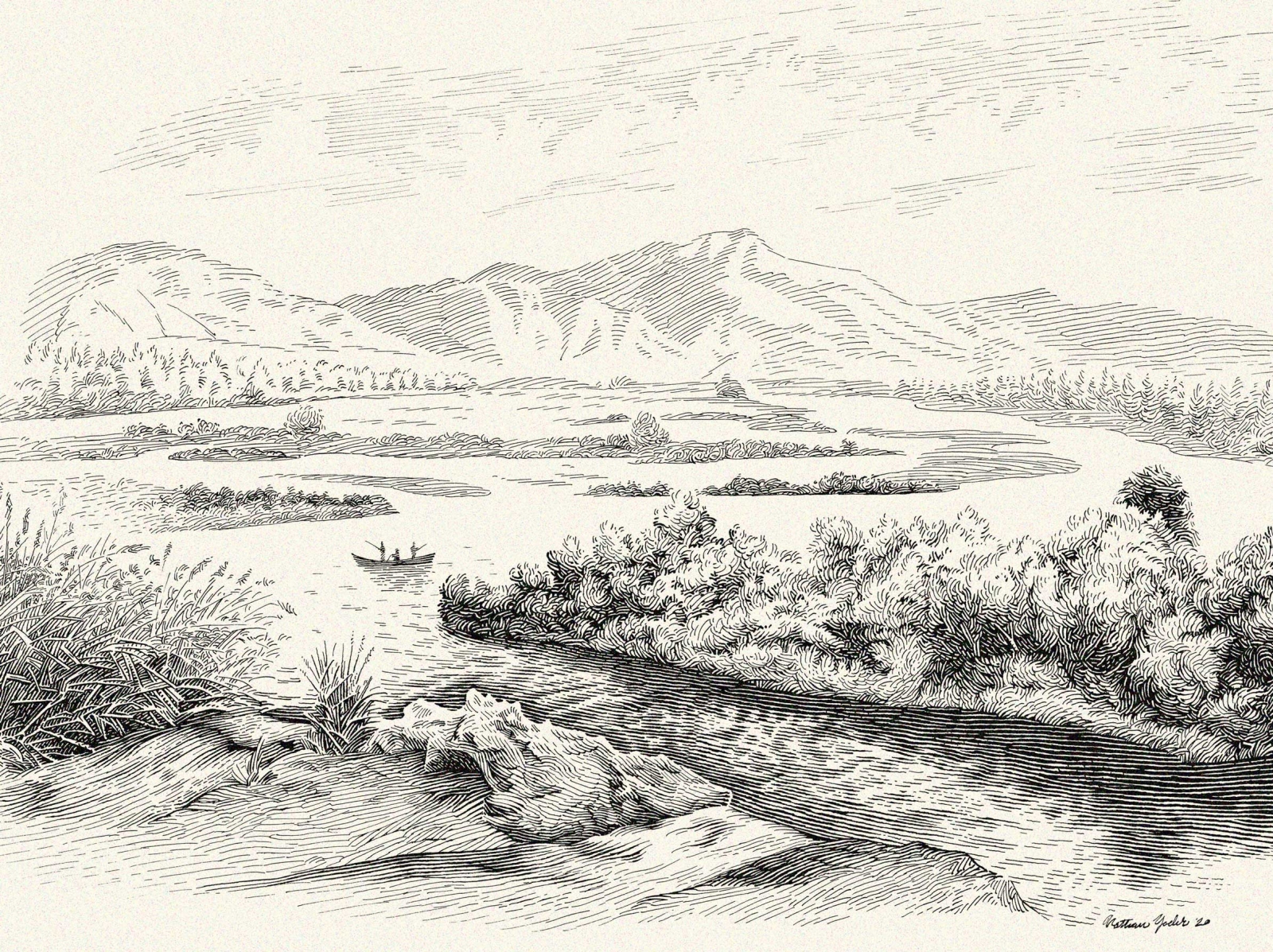
In the foreground area, lightly sketch long, narrow ovals slightly narrower at the top than at the bottom.Watercolor landscape sketch. Step 1: Draw a horizon line in the center of the page. The lines drawn in previous steps are shown in gray. Follow the red lines in each illustration to learn exactly what to draw in that step.

Landscape Sketch How To Best Draw
There's just so much beauty to choose from.You can use a viewfinder to pick a specific part of a view that will work well as a sketch. And your viewers will be none the wiser.Because nature is so vast it can be difficult to decide which part of a view to include in your drawing. You can add a stream to balance your composition, give a hedge a little trim if it's too prominent. There are smooth brown hills in the background and a few fluffy white clouds in the sky".See how I used a lot of adjectives there, like 'calm', 'lush' or 'smooth'? Those are excellent to work out how to best draw those parts and hone in on possible points of interest.Have a look at my post 7 great Exercises to Improve your Landscape Drawing Skills for an exercise that builds up on this.As I've mentioned in my article Why Drawing Landscapes is so Popular (and so Good for your Art), one of the best parts of sketching outdoor views is that you can easily edit them.Unlike other subjects, such as architecture or portraits, in a landscape your audience often cannot tell if you have been faithful to reality or making allowances.You can move branches or entire trees if they're in the way.

If you sketch them large, on the very edges of the work, it’ll look as if they were directly in front of the viewer.One of the most intriguing things you can do to make your landscape sketches look more interesting is to copy what nature does and use a lot of variety.With all those different colours, patterns and shapes it would be a waste if you used just one single technique, or indeed medium, in all your sketches.The next time you feel a little adventurous, try to combine techniques, such as stippling, hatching and smudging to represent different parts of your scene. But you’ll still want the viewer to realise that some elements are closer to them or further away than others, so the sketch doesn’t look flat.The easiest way to achieve this in a nature scene is by using aerial perspective, the visual illusion where things further in the distance appear lighter, bluer and less clearly defined.My post 5 great Exercises to learn Perspective Drawing the easy Way has an aerial perspective exercise for you to practice.Another fun trick is to frame your work with a branch or a patch of long grass, for example. If you have 70% detailed drawing you could compliment it with 30% rough sketch, and so on.In a typical landscape view, you won't find many clear convergence lines simulating visual depth to the human eye. An English country garden, for example, can be so overwhelmingly colourful and bushy that it might even be a bit much on the eye, let alone the time it’d take you to draw it all.To avoid all the elements of your sketch visually melting together the 30/70 rule is the perfect guide.You can read more about it in my article on Composition in the Arts, but the general idea is to split a drawing into 30% of one type of element and 70% of the other, for a composition that is interesting as well as visually pleasing.If 70% of your page is taken up by bushy plants, you could balance it out with 30% trimmed lawn or rough cottage wall. And you can try moving elements around in your work to see how it would look, too.Nature views can be quite busy, especially when greenery is involved. There can be several points of interest in a drawing, but usually only one focal point.Even if you are using a viewfinder drawing a few quick thumbnails on some scrap paper to finalise the composition is always a good idea.Thumbnails tend to be quite small and very rough, usually taking no more than a few seconds to draw.Once you've decided on a format, angle and focal point for example, you could use the thumbnail to make sure your idea works as great on paper as it does in your head.
A pretty pond in the midday sun may be cheerful and lively. My article 8 handy Tips for Drawing and Painting Outside has more good pointers for you.Depending on the weather or the time of day the same natural scene can look vastly different. Rain, storm, fog and frost are great for sketching, as long as you dress for the occasion. It's great to try out a view at different times of day and see how this affects colours, shadows and the overall composition.Drawings done in less than "perfect" weather can also create a lot of atmosphere. And, since they're not supposed to be a realistic representation, it takes a lot of the pressure off.The best part about drawing outside is the wonderful natural light you get to work with.
...


 0 kommentar(er)
0 kommentar(er)
